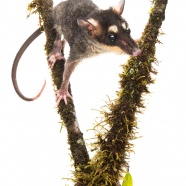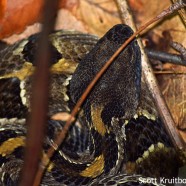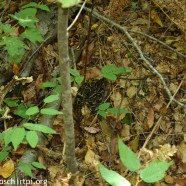Gray Four-eyed Opossum
This is a young Gray Four-eyed Opossum (Philander opossum) caught in one of our mammal traps, as we were surveying for an unusual jungle rodent called Watson’s Climbing Rat (Tylomys watsoni) in Rara Avis Nature Reserve, Costa Rica. Believe it or not, the rat would have been bigger than this opossum (and particularly fond of chocolate and soap). Like it’s cousin, the Virginia Opossum, these guys show a remarkable resistance to venoms and poisons, including snake venom, and are relatively immune to dangerous snake bites. In North America, opossums have been credited with being a biological...
Read MoreHarvestman with Mites
This Harvestman had a very large mite problem! Check out all of those parasites…I felt for this creature. It may be why it was hiding in a crevice of the bark of this maple tree. I do not think this ended well for it. Scott Kruitbosch Conservation & Outreach Coordinator
Read MoreDaddy Longlegs
Those really are some long legs after all…although I believe it is more accurate to call this a harvestman, or opiliones. The story of this being one of the most venormous animals in the world if not for the fact it does not have the requisite fangs to bite humans is a myth on many levels! I did not even notice until posting this photo that it seems to be missing one of those legs… Scott Kruitbosch Conservation & Outreach Coordinator
Read MoreMelanin deposit – Timber Rattlesnake
Do you see the perceptible streak of blue along the right side of the head of this Timber Rattlesnake? That is a special shield for its venom and venom glands that can be found in both pit vipers like Crotalus horridus as well as true vipers. This melanin deposit helps to block visible and ultraviolet light from harming the internal systems and prevents detoxification of the venom itself. That is some advanced evolution!
Read MoreApex predator or small meal?
When looking at a “teenage” Timber Rattlesnake from above like this it seems rather insignificant and certainly unimposing. We know it is a venomous snake, which may add a bit of intimidation, but we should also know it is shy, passive and uninterested in harming a human unless it is being directly threatened. At this time of year there are much smaller Timber Rattlesnakes – some less than a foot long – in the form of neonates. These newly-born young have fangs and venom but a significant percentage will perish in their first year from a variety of threats. Twan...
Read More








